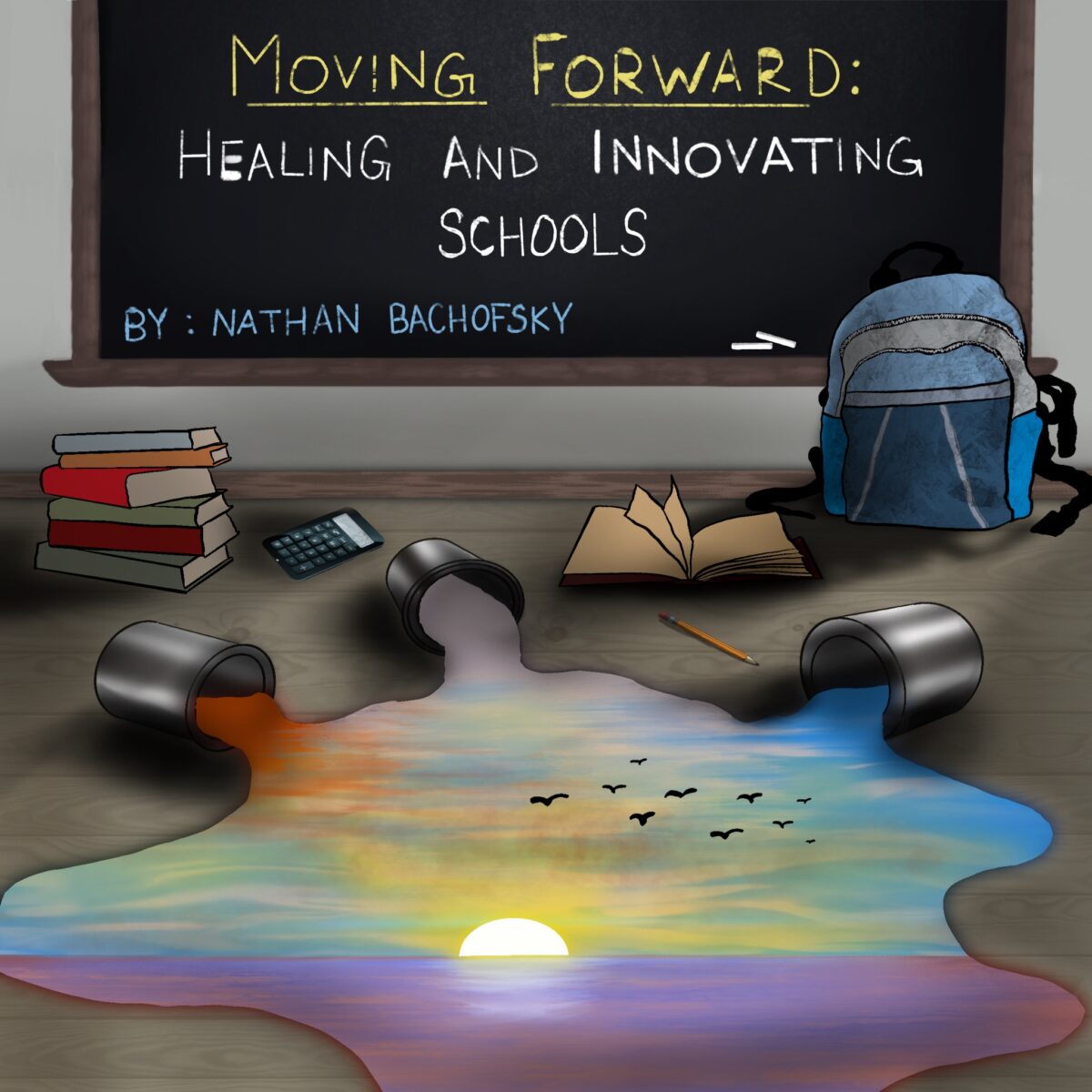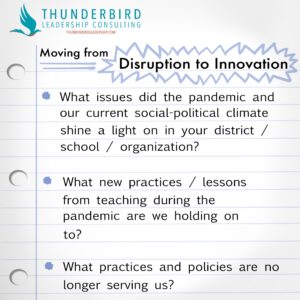Moving Forward: Healing and Innovating Schools

Just the other day, I was sitting in a meeting with a team of teachers and administrators. The theme of our school year has been centered around courage, and we were discussing ways in which we can celebrate this at our end of the year faculty/staff convocation. As we discussed how we wanted to honor the staff after the immense challenge of teaching during this pandemic, it hit me. In all this time since the pandemic started, we had never truly taken the time to reflect on how these past two years affected our faculty and staff. Schools have much to process after dealing with the trauma of this disruption to everyday life and work. I have spent the past 8 months speaking with teachers and administrators from around the country from diverse schools and backgrounds to process the effects of the pandemic and political climate on schools.
As I reflect on my own work as a teacher and leader and from the conversations with other professionals in education, I decided to attempt to answer the questions: How can we begin the process of healing and start the conversations needed to move our schools from a space of disruption to innovation? Below are some considerations and a call to action for all superintendents, school boards, and those in school leadership positions.
Pause and Process
Before we can move forward, we have to pause, check-in, and take inventory of our emotions, thoughts and feelings. Teachers, administrators, and staff have been in crisis mode since March 2020, and many haven’t left that space. We immediately pivoted to teaching online, using new technology, and trying to also meet the social-emotional needs of our students, while taking care of our own families. Before we can move forward at all, I’d charge schools to create space for teachers, administrators, and staff to process everything we’ve been through. Bring in mental health professionals from outside the organization to guide these often difficult conversations. School leaders don’t need to have all the answers, but they can create space in team meetings to demonstrate deep listening and empathy. With the nationwide need for more social-emotional learning in schools for students, how might a social-emotional support program look for the adults in the building? No time is wasted when faculty and staff can pause and reflect on thoughts and feelings. Through the sharing of each others’ stories we can begin to see the commonality in our experiences and begin the process of healing and moving forward.
Teachers and School Leaders Need Support
If you haven’t been paying attention, I have some troubling news. Teachers and administrators are leaving the profession in droves. Teacher burnout is worse than ever as evidenced by the teacher shortage that has been highlighted in the news. We need brave leaders and policy makers to advocate for our school systems that are quite literally under attack. We have officially come to a crossroads in which the passion for changing lives no longer balances out the poor policies and working conditions that are squeezing the joy and heart from a profession so near and dear to many. Many states and local school districts are still running schools in the same way that they have been for decades. We forge on advocating for fair teacher pay, reduced standardized-testing, fair and equitable access to education, and all other vitally important issues facing our field that deserve the forefront of our attention. While we work to advocate for these tough issues, we can still adjust our organizational practices and lead schools into a space of growth and innovation.
Every Voice Matters
 Once we begin to process our past and current realities, it’s time to collaboratively build the future of our schools and districts and steer toward new possibilities. Take this crucial time to invite all stakeholders to the table to share their vision for the school or district moving forward. Organize your conversations with stakeholders around the following questions:
Once we begin to process our past and current realities, it’s time to collaboratively build the future of our schools and districts and steer toward new possibilities. Take this crucial time to invite all stakeholders to the table to share their vision for the school or district moving forward. Organize your conversations with stakeholders around the following questions:
- What issues did the pandemic and our current social-political climate shine a light on in your district/school/organization?
- What new practices/lessons from teaching during the pandemic are we holding on to?
- What practices & policies are no longer serving us?
It’s important that everyone has a voice in this process. This conversation can occur with the greater school community as whole, or it may happen at the department/team level. Streamlined communication and transparency in sharing the results of these conversations is a vital step in the process of moving forward towards change.
Real Change Takes Time
Once new opportunities and directions are revealed and identified through these discussions, it’s time to create actionable steps towards change. It’s helpful to bring in an outside organization to help facilitate the discussion and strategic planning so that school leaders can be fully present and part of these important conversations. Having a separate, unbiased set of ears to synthesize the discussions and support the steps forward is vital to the process.
Change can make us uncomfortable at first. Showing up with honesty, openness, and good intention nurtures growth and makes way for new possibilities. As we learned in preschool from the story of the tortoise and the hare, slow and steady really does win the race. Any changes and decisions that are made must be approached through the lens of “why.” I’m always reminded by a colorful magnet on my classroom white board that, “Great things take time.” It’s so true – real, quality change, when done correctly, is slow, methodical, and purposeful. Be patient in the implementation stage of the process, remain open to feedback, and make adjustments accordingly. 
Leadership at All Levels
Everyone has the ability to be a leader no matter what role they possess in the organization. The stakes are too high and the work is too great in education for administrators to call all the shots. To truly change the culture of a school and empower its community, the top down approach must be dismantled and a shared, collaborative approach to leadership must be embraced. Not all teachers and staff have formal leadership training, but by nurturing the skills of self-awareness, deep listening, empathy, curiosity, and decisiveness, a new and positive culture and climate can emerge. When we approach leadership as a shared practice, we can suddenly make time for the tasks, projects, and practices that are more impactful. All of a sudden, principals can be more visible, teachers can have meaningful collaboration, and all stakeholders can feel heard and involved.
Moving Schools from Disruption to Innovation
After 12 impactful years of service in public and private schools as an educator and leader, I am answering the call to support schools in moving forward and achieving dynamic outcomes. I decided to leave my classroom position and team up with Thunderbird Leadership to support schools on their journey toward healing and innovation. The Disruption to Innovation in Schools program through Thunderbird puts relationships and teaming first. Founded in the principles of Caring Leadership, our programming builds a culture of self-awareness, deep listening skills, empathy, curiosity, and decisiveness in both administrators and staff. This is a time for districts to step back and refocus on the people and relationships that make learning happen. When we do, morale improves, teams are more efficient, and students have a more supportive environment to thrive. Thunderbird truly partners with schools to ignite teams and environments that excel through leadership coaching, teaming, community building, and various professional development topics to promote Caring Leadership in your school. Reach out by email (nbachofsky@thunderbirdleadership.com) to find out how we can help transform your school and join this movement!
